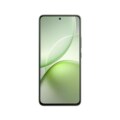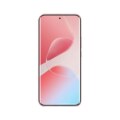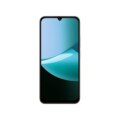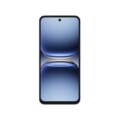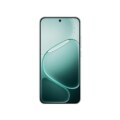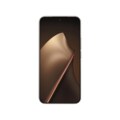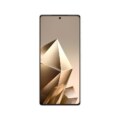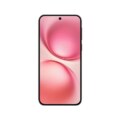Samsung Galaxy A56 5g
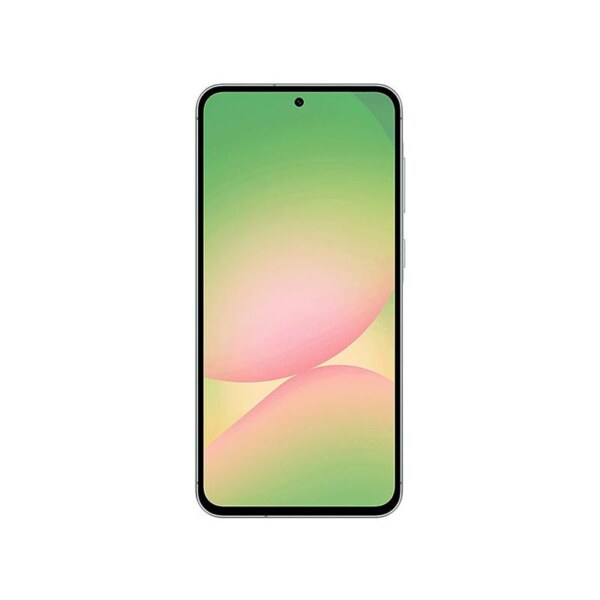

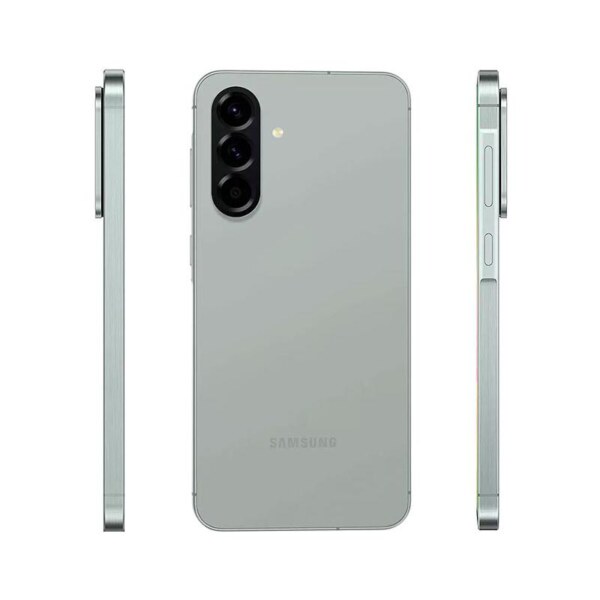
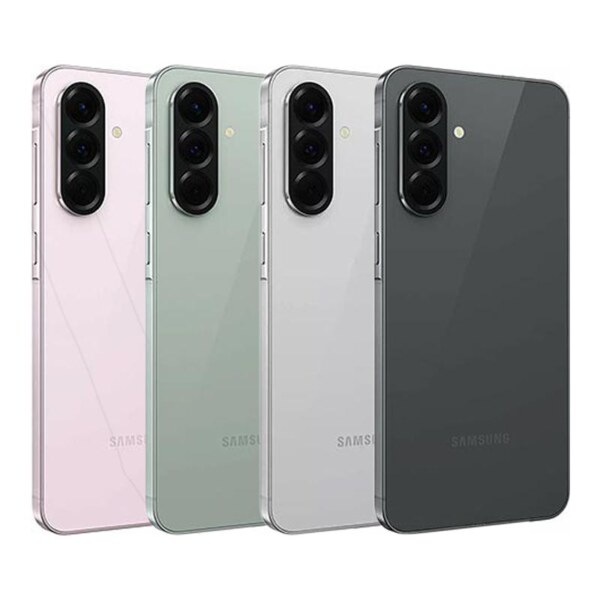
-
Chipset: Exynos 1580 (4 nm)
-
RAM: 8GB
-
Storage: 256GB
-
Display: 6.7 Inches, Super AMOLED, 120Hz, HDR10+, 1200 nits (HBM), 1900 nits (peak)
-
Camera: 50MP + 12MP + 5MP + 12MP
-
OS: Android 15 OS
Specs
General
| Device Type | Mobile |
| Model | Samsung Galaxy A56 |
| Released | 02 July, 2025 |
| Status | Available |
| Price | 137,999 |
Design
| Type Design Type called form factor refers to a mobile phone's size, shape, and style as well as the layout and position of major components of phone. There are three major form factors seen in mobile phones => bar phones, folding phones and sliding phones. | Bar |
| Dimensions | 162.7 x 77.5 x 7.4 mm |
| Weight | 197 g |
| Colors | Black; other colors |
| Extra Features Extra Features in Display of mobilpehones | IP67 dust/water resistant (up to 1m for 30 min), Glass front + Gorilla Glass Victus), Glass back + Gorilla Glass), Aluminum frame |
Network
| 2G Network Indicates whether the mobile phone supports 2G network connectivity for basic calls and texts. |
SIM1: GSM 850 / 900 / 1800 / 1900 SIM2: GSM 850 / 900 / 1800 / 1900 |
| 3G Network Indicates whether the mobile phone supports 3G connectivity for standard internet browsing and calls. | HSDPA 850 / 900 / 1900 / 2100 |
| 4G Network Indicates whether the mobile phone supports 4G connectivity for fast internet browsing and HD calls. | LTE band 1(2100), 3(1800), 5(850), 7(2600), 8(900), 20(800), 38(2600), 40(2300), 41(2500) |
| 5G Network Indicates whether the mobile phone supports 5G connectivity. | SA/NSA/Sub6 |
| SIM SIM (Subscriber Identity Module) is a small card that contains mobile network subscriber's account information. This allows the phone using the card to attach to a mobile network. The SIM card is most commonly associated with GSM and UMTS mobile networks. Moving a SIM card from one phone to another allows a subscriber to switch mobile phones without having to contact their mobile network carrier. SIM cards can also be used by a phone to store limited amounts of data, such as phone numbers and text messages. | Nano-SIM + Nano-SIM + eSIM (max 2 at a time) |
| Dual SIM | Yes, Dual SIM |
Display
| Display Type Display Technology => A number of display technologies and types used in mobile phones => TFT (Thin Film Transistor), IPS (In-Place Switching), OLED (Organic Light Emitting Diode), AMOLED (Active-Matrix Organic Light-Emitting Diode), Super AMOLED (an even advanced version of AMOLED), Resistive Touchscreen (Resistive touchscreens contain two layer of conductive material with a very small gap between them which acts as a resistance), Capacitive Touchsceen (Capacitive touchscreen technology consists of a layer of glass coated with a transparent conductor) | Capacitive Super AMOLED Touchscreen |
| Size | 6.7 Inches |
| Resolution | 1080 x 2340 Pixels |
| Pixel Density Pixel Density (PPI) is refers to the concentration of pixels on a particular display, measured in pixels per inch (ppi). Pixel density is calculated by dividing the diagonal pixel resolution of a display by its diagonal size, higher pixel density better display quality. | (~385 PPI) |
| Display Protection Display Protection => Gorilla Glass is a special alkali-aluminosilicate glass shield with exceptional damage resistance that helps protect mobile displays from scratches, drops, and bumps of everyday use, It is always better to go for a smartphone with Gorilla Glass for that added protection and peace of mind. | Corning Gorilla Glass Victus |
| Features | 120Hz, HDR10+, 1200 nits (HBM), Always-on display |
Media
| FM Radio | No |
| Loudspeaker | Yes, with stereo speakers |
| 3.5mm jack Is it have 3.5mm headphone jack or not. | No |
Camera
| Primary Camera is able to capture photographs and usually videos, The most important characteristics of a camera are the resolution (measured in megapixels), lens focus type (fixed or automatic), higher megapixel cameras are known to capture higher quality photos, but not always a good measurement of the photos quality. | 50 MP, f/1.8, (wide), 1/1.56", PDAF, OIS + 12 MP, f/2.2, (ultrawide), 1/3.06" + 5 MP, f/2.4, (macro) |
| Video | 4K@30fps, 1080p@30/60fps, gyro-EIS |
| Camera Features | panorama, HDR |
| Flash Flash Light => There is commonly two types of flash lights are used in camera mobile phones, LED Flash (LED flash offers lower power consumption with drive circuitry that takes up very little room, LEDs can be strobed faster than any other light source), Xenon Flash (xenon flash produces an extremely intense full-spectrum white light for a very short duration) | LED Flash |
| Secondary | 12 MP, f/2.0, (wide), Video (4K@30fps, 1080p@30/60fps) |
Software
| Operating System OS => Every computer system run on a base software called Operating System (OS). Operating System controls all basic operations of the computer (such as smartphone, PDAs, tablet computers and other handheld devices). The Operating System allows the user to install and run third party applications (apps), apps are used to add new functionality to the device. | Android 15 OS |
| User Interface UI or user interface of a device is the look and feel of the on-screen menu system. How it works, its color scheme, how it responds to button presses, all of these things are part of the user interface. | OneUI 7 |
Hardware
| Chipset Chipset is a group of integrated circuits designed to perform one or a more dedicated functions, often with real time computing constraints, Popular smartphones are equipped with more advanced embedded chipsets that can do many different tasks depending on their programming. | Exynos 1580 (4 nm) |
| CPU CPU (Central Processing Unit) mostly known as processors, CPU processes instructions in order to carry out certain functions that make your device operate properly. Processors are often described as the brain of computers, smartphones and tablets, Smartphones and tablets rely on processors to carry out their every task, Processors are an incredibly important factor in selecting any type of computing device, including your smartphone. | Octa-core (1 x 2.91 GHz + 3 x 2.6 GHz & 4x1.95 GHz) |
| GPU GPU | Xclipse 540 |
| RAM (Memory) RAM (Random Access Memory) is a type of computer memory that can be accessed randomly, any byte of memory can be accessed without touching the preceding bytes that allows information to be stored and accessed quickly from random locations. RAM is the most common type of memory found in computer systems, smartphones, tablets and other electronic devices. | 8GB |
| Internal Storage Internal Storage is a data storage space (flash memory) mostly used in smartphones, tablets and other electronic devices where operating system, apps, music, photos, videos, files and other user data Is stored. | 256GB |
| Card Slot Memory Card Slot is a special slot for inserting a memory card. Memory cards allow you to expand the phone's built-in memory, A memory card (sometimes called a flash memory card or a storage card) is a small storage medium used to store data such as text, pictures, audio, and video, for use on small, portable or remote computing devices such as mobile phones, mp3 players, digital cameras. | microSDXC (uses shared SIM slot) |
| Fingerprint fingerprint | In-Display |
| Sensors Sensors are electronic components that detects and responds to some type of input from the physical environment. The specific input could be light, heat, motion, moisture, pressure and location, The output is generally a signal that is converted to use in computing systems, a location sensor, such as a GPS receiver is able to detect current location of your electronic device. | Accelerometer, Compass, Gyro, Proximity, Circle to Search |
Connectivity
| Bluetooth Bluetooth is a wireless communications technology for exchanging data between mobile phones, headsets, computers and other network devices over short distances without wires, Bluetooth technology was primarily designed to support simple wireless networking of personal consumer devices. | v5.3 with A2DP, LE |
| Infrared Infrared connectivity is an old wireless technology used to connect two electronic devices. It uses a beam of infrared light to transmit information and so requires direct line of sight and operates only at close range. | |
| Wi-fi Wi-Fi is a popular wireless networking technology using radio waves to provide high-speed network connections that allows devices to communicate without cords or cables, Wi-Fi is increasingly becoming the preferred mode of internet connectivity all over the world. | Wi-Fi 802.11 a/b/g/n/ac/6e, dual-band, Wi-Fi Direct |
| USB | USB Type-C 2.0, OTG |
| GPS GPS The Global Positioning System is a satellite-based radio navigation system, GPS permits users to determine their position, velocity and the time 24 hours a day, in all weather, anywhere in the world, In order to locate your position, your device or GPS receiver must have a clear view of the sky. | Yes + GPS, GLONASS, GALILEO, BDS, QZSS |
| NFC NFC (Near field communication) is a set of standards for smartphones and similar devices to establish peer-to-peer radio communications with each other by touching them together or bringing them into proximity, usually no more than a few inches. |
Data
| GPRS GPRS (General Packet Radio Service) is a packet oriented mobile data service on the 2G and 3G cellular communication system's global system for mobile communications (GSM), Generally, GPRS is used for the purpose of wireless data transfer, such as sharing pictures and videos or browsing the Internet via a mobile phone connection. | |
| EDGE EDGE (Enhanced Data GSM Environment) is a wireless network technology generally considered the next step in the 2G network offers data transfer rates up to four times faster than ordinary GSM networks, Generally, EDGE is used for the purpose of wireless data transfer, such as sharing pictures and videos or browsing the Internet via a mobile phone connection. | |
| Speed | 2G GSM, 3G HSPA, 4G LTE, 5G capable |
| Web Browser Web Browser => a web browser is a software application used to locate, retrieve and display content on the World Wide Web, including Web pages, images, video and other files, The primary function of a web browser is to render HTML, the code used to design or markup webpages. | HTML5 |
Messaging
| SMS SMS (Short Messaging Service) is a text messaging service component of phone, Web, or mobile communication systems. It uses standardized communications protocols to allow mobile phone devices to exchange short text messages over the networks. | Yes |
| MMS MMS (Multimedia Messaging Service) is a standard way to send messages that include multimedia content (audio clips, video clips and images) to and from mobile phones over wireless networks using the WAP protocol. | Yes |
| Email Email (Electronic Mail) is a system for receiving, sending, and storing electronic messages, Similar to a letter, email is text messages that may contain files, images, or other attachments sent via the internet to a recipient by using applications and software prograps. An email address is required to receive email, and that address is unique to the user. | Yes |
Battery
| Battery Type Battery Type => Cell phones run on various kinds of batteries depending on the manufacturer, phone size or shape and features. There are basically four types of cell phone batteries => Lithium Polymer, Lithium Ion, Nickel Metal Hydride and Nickel Cadmium. | Li-Poly (Lithium Polymer) |
| Capacity Battery Capacity is a measure (typically in Amp-hr) of the charge stored by the battery, and is determined by the mass of active material contained in the battery. The battery capacity represents the maximum amount of energy that can be extracted from the battery under certain conditions. | 5000 mAh |
| Fast Charging Is the device support fast charging. | Fas45W wired |
| Wireless Charging Wireless Charging (Inductive Charging) uses an electromagnetic field to transfer energy between two objects. This is usually done with a charging station. Energy is sent through an inductive coupling to an electrical device, which can then use that energy to charge batteries or run the device. | No |
Samsung Galaxy A56 5G, Premium Flagship Feel at Half the Price
Assalamualaikum everyone! If you’re searching for a phone that feels like a flagship but doesn’t cost as much, the Samsung Galaxy A56 5G might be the perfect choice for you. It sits between Samsung’s budget and flagship phones and brings many high-end features at almost half the price of the top Galaxy S series.
In Pakistan, the Galaxy S25 flagship costs around Rs. 3,15,000, while the A56 5G starts at Rs. 1,38,000 for the 8/256GB model and Rs. 1,51,000 for the 12/256GB version. So, you get a premium feel but save a big amount.
The Galaxy A56 5G comes in a slim white box like Samsung’s expensive phones which means there’s no charger inside, just the phone, cable, SIM tool, and paperwork. The phone looks premium with Gorilla Glass protection on the front and back and a beautiful aluminium frame. Its design is very similar to the Galaxy S25, with some small changes in the camera module. The light grey glossy back looks stylish and doesn’t catch fingerprints easily plus, you can get it in Awesome Pink, Graphite, or Olive too.
This phone has IP67 dust and water resistance, so it can handle a dip in water for 30 minutes another premium feature. It’s slim and lightweight at just 198 grams, and the 6.7-inch Super AMOLED display feels flagship-level too. You get 120Hz refresh rate and up to 1900 nits peak brightness, which means bright and smooth visuals even in sunlight. It has an optical fingerprint sensor and slightly thicker bezels than Samsung’s top models, but for daily use, you won’t even notice.
Audio is also solid with dual speakers that are loud and well-balanced. Next comes the camera the A56 packs a triple camera setup with a 50MP main sensor (with OIS), a 12MP ultra-wide, and a 5MP macro. The main sensor is different from the flagship, but Samsung’s image quality is still reliable good colours, dynamic range, and decent selfies with the 12MP front camera.
The processor is the Exynos 1580 a good mid-range chip built on 4nm, paired with UFS 3.1 storage (same as older flagships). There’s no microSD slot, so pick enough storage when you buy. It also supports eSIM, which is useful for travellers. Everyday tasks, casual gaming, and multitasking feel smooth. It runs Android 15 with Samsung’s One UI 7, which looks neat and works well, giving you a flagship-like software feel too. Plus, you’ll get 6 years of security updates and 6 major Android updates a huge plus for Samsung fans.
The 5000mAh battery with upgraded 45W fast charging keeps you going all day, but there’s no wireless charging here which isn’t a big deal for many people.
Overall, the Samsung Galaxy A56 5G gives you a lot of flagship vibes in design, display, build quality, and everyday use, while staying in the mid-range price. You might miss some flagship extras like a telephoto camera or Samsung DeX, but for most users, it’s a great balance of price and premium features.
What do you think? Would you go for the Galaxy A56 5G or spend more for a full flagship? Let me know!
Pricing:
Here are the current prices for the Samsung Galaxy A26:
- Price in Paistan: PKR 139,999
- Price in USD: $422
Reviews
Disclaimer Note
You can write your own disclaimer from APS Settings -> General -> Disclaimer Note.


